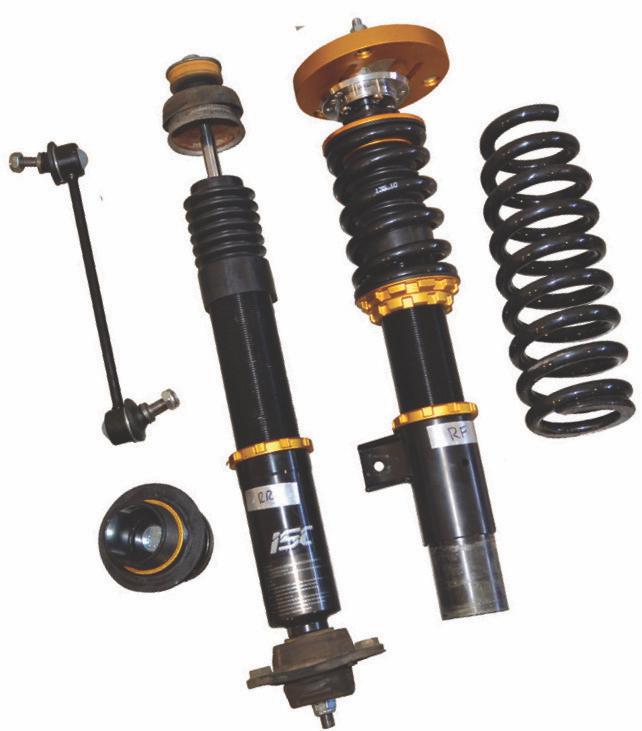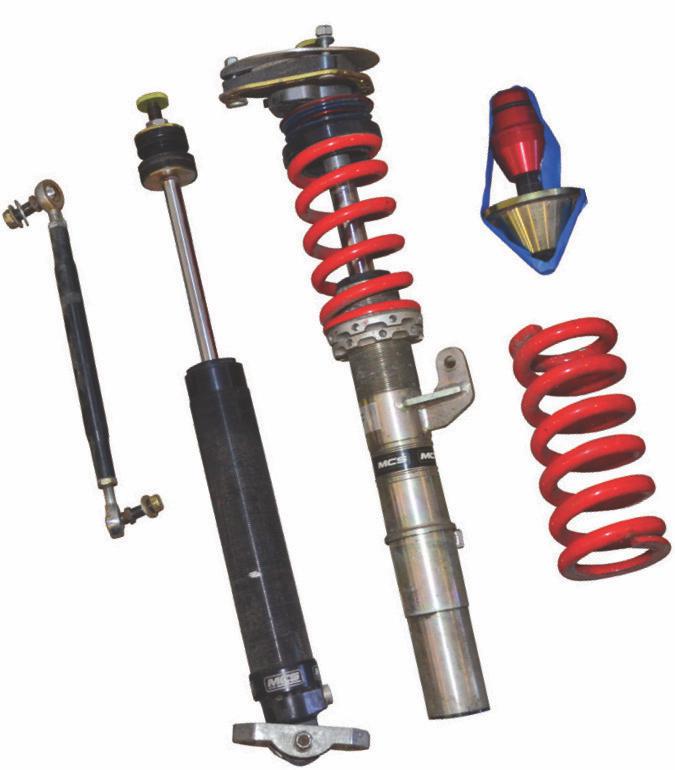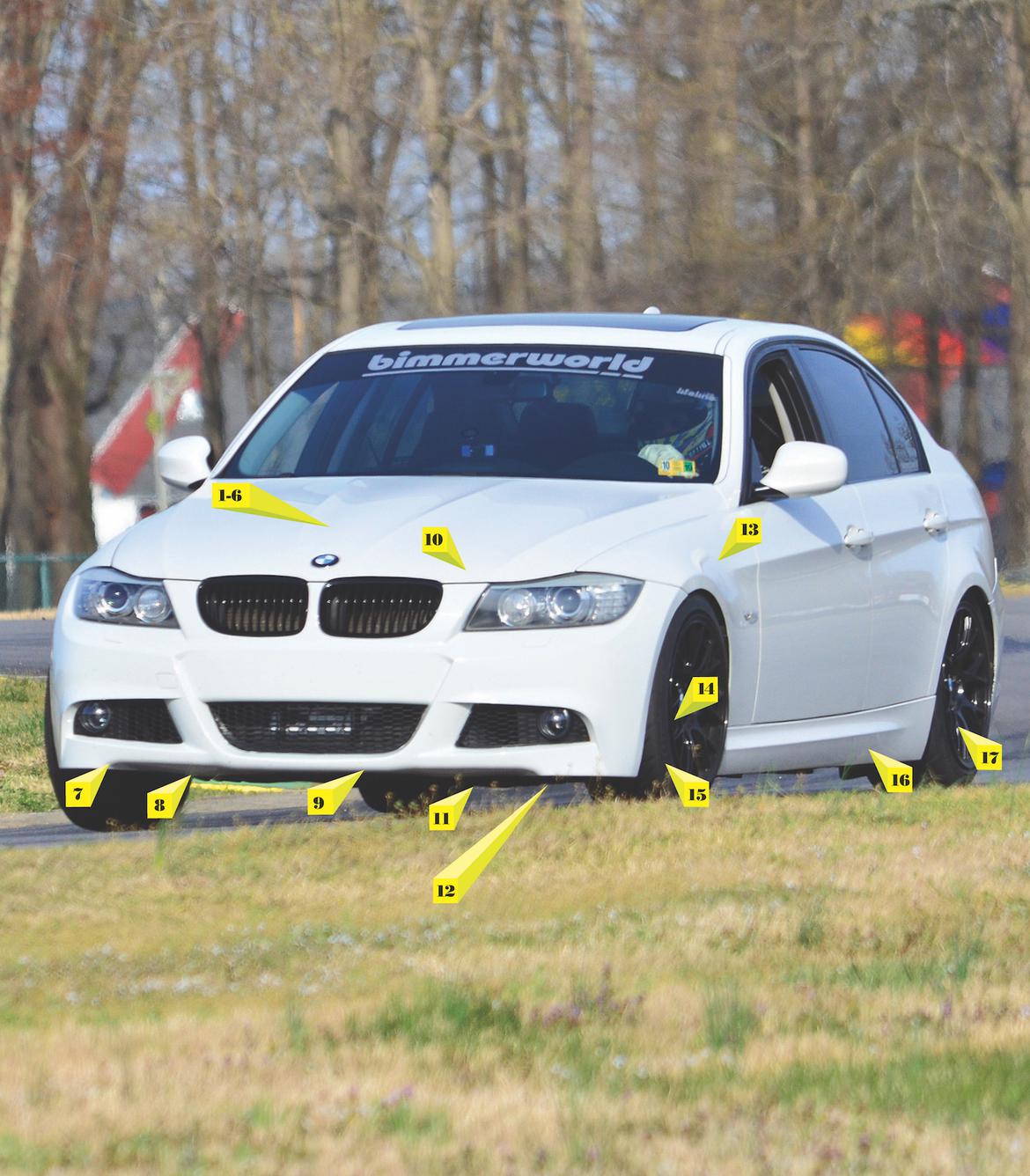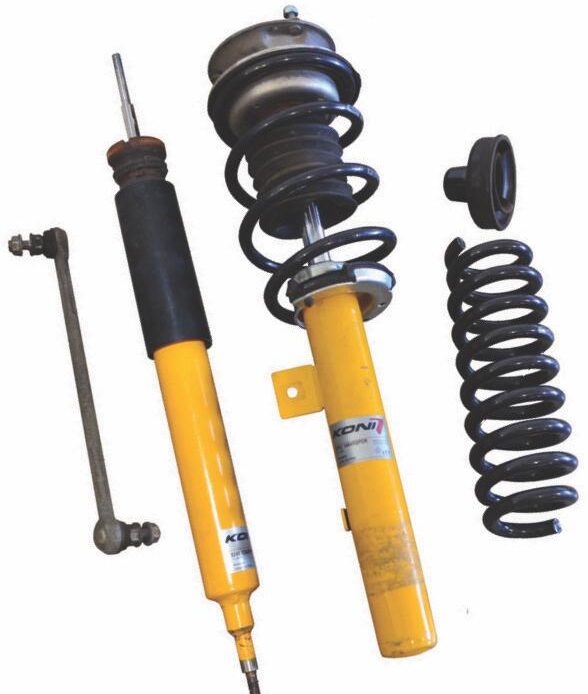[Editor’s Note: This article originally appeared in the December 2019 issue of Grassroots Motorsports.]
Yes. No. Maybe.
More likely, the answer is the usual: It depends.
Take a suspension setup. Today’s market offers the full range of options, from simple, comfortable upgrades to hardcore, race-spec hardware. Do you need to jump to the head of the line in …
Our Hypothesis
Conventional wisdom says that a race-tuned, coil-over suspension setup turns faster lap times than a simple spring and shock upgrade, but what does the data say?
And is trading a few ticks for comfort always such a bad thing? That’s where the all-knowing butt dyno comes into play. Fortunately, we have a well-calibrated butt: the one belonging to James Clay, pro racer and founder of BMW tuning house BimmerWorld.
Test Subjects
SETUP 1
Koni Sport street dampers + Eibach Pro-Kit sport Springs
SETUP 2
ISC value-priced coil-overs

SETUP 3
MCS premium coil-overs

Test Car
We figured our test car should be a little bigger and heavier to provide a good suspension workout, so we enlisted a BMW. BimmerWorld’s James Clay says that interest in the E90-chassis, non-M 3 Series is on the rise, so that’s what we picked–specifically, his shop’s 2010 BMW 335i project car. It’s a six-speed, rear-drive sedan powered by the twin-turbo, inline-six engine.
As James adds, however, a clean example like this one is a bit of a unicorn. Many of the cars found on today’s market feature all-wheel drive, automatic transmissions or troubled histories. He spent more than a year seeking out this particular one.

Go back about a decade, and BimmerWorld helped us build a 335i that could run with an M3. One small problem, though: After a few laps, things got hot and the car went into a limp-home mode. BimmerWorld didn’t give up on the idea, however, and now has a 2010 335i track car in its fleet.
1. The engine enters that limp-home mode when coolant temperature reaches 245 degrees or the oil temp hits 304 degrees. “Again, we know the temperature thresholds can be changed in the software. But BMW put them there for a reason (and it’s not to ruin the fun),” the shop’s site explains….
Click Here to Read the Full Original Article at Grassroots Motorsports Online Articles…

